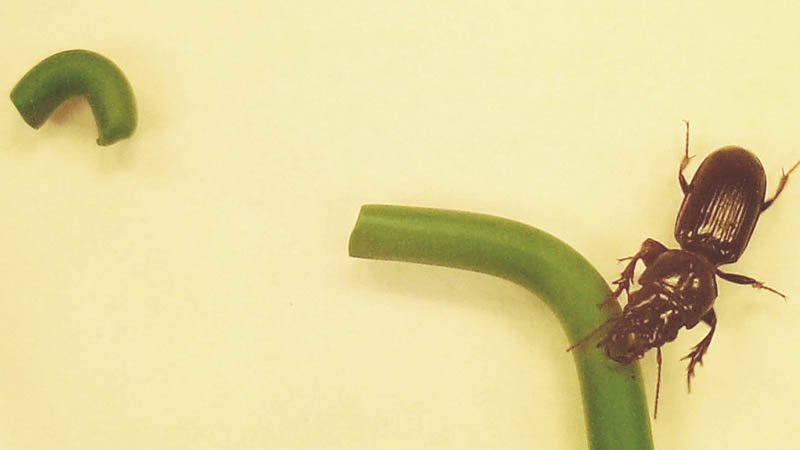
Turf managers can use all the help they can get when it comes to managing common pests such as fall armyworms and black cutworms. But little is known how natural predators interact with these pests.
Research at the University of Georgia is shedding light on how various predators attack their pray when it is in its vulnerable larval stage. And the medium used to track this activity.
The study showed that beneficial predator insects will attack even clay models that resemble their prey, the larvae of cutworms and armyworms. Results of the study by entomology University of Georgia doctoral candidate Fawad Khan were published in November in the publication "Entomologia Experimentalis et Applicata." It is believed to be the first study that used modeling clay in such a manner in turfgrass research.
The research team, that included assistant professor Shimat Joseph, Ph.D., created two sizes of simulated larvae from modeling clay. Then they collected natural predators from turf lawns at UGA's Griffin campus. Each collected arthropod spent 48 hours in a petri dish with two sizes of clay larvae models. This was enough time for them to make their marks. Because the clay stays soft at room temperature, any markings left by the predators were preserved.
Researchers observed how the predators interacted with models in the field. Outside of the petri dish-controlled environment, they also placed the clay models near a fire ant mound in turfgrass. The study found different types of predators created distinct markings after attacking the clay models.
Researchers noted the differentiations in the specific markings left by each of at least a dozen types of predators, so they could further study these relationships in real-world settings.
According to Joseph, the clay models are effective and cheap. Clay models of worm larvae left on trees or in the turf canopy usually will attract predators within a day or two.
Further research into predation on cutworms and armyworms by different predators in different systems so as to include the results in IPM programs and that predatory behavior actually can be manipulated and influenced.

